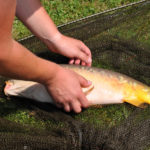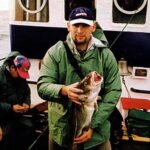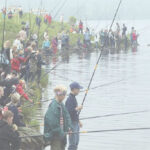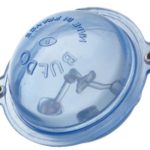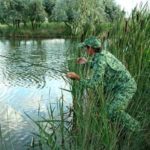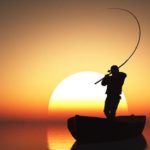 W sytuacji kiedy „wędkarzy jest więcej niż ryb”, nie wystarczy już wędkarska „matura”, a przyszły mistrz w tej sztuce będzie musiał zaliczyć także kilka semestrów „wędkarskiego uniwersytetu”. Pierwszy semestr może zacząć z nami zapoznając się z częścią tematyczną powstałą pod wpływem modnego trendu — „na ryby z komputerem.”W sytuacji kiedy „wędkarzy jest więcej niż ryb”, nie wystarczy już wędkarska „matura”, a przyszły mistrz w tej sztuce będzie musiał zaliczyć także kilka semestrów „wędkarskiego uniwersytetu”. Pierwszy semestr może zacząć z nami zapoznając się z częścią tematyczną powstałą pod wpływem modnego trendu — „na ryby z komputerem.”
W sytuacji kiedy „wędkarzy jest więcej niż ryb”, nie wystarczy już wędkarska „matura”, a przyszły mistrz w tej sztuce będzie musiał zaliczyć także kilka semestrów „wędkarskiego uniwersytetu”. Pierwszy semestr może zacząć z nami zapoznając się z częścią tematyczną powstałą pod wpływem modnego trendu — „na ryby z komputerem.”W sytuacji kiedy „wędkarzy jest więcej niż ryb”, nie wystarczy już wędkarska „matura”, a przyszły mistrz w tej sztuce będzie musiał zaliczyć także kilka semestrów „wędkarskiego uniwersytetu”. Pierwszy semestr może zacząć z nami zapoznając się z częścią tematyczną powstałą pod wpływem modnego trendu — „na ryby z komputerem.”
Nasza nauka będzie w zasadzie ukierunkowana na konfrontację obowiązujących (a więc powszechnie uznawanych) zasad połowu poszczególnych gatunków cenionych u nas ryb, z praktycznymi wynikami połowów. W naszym wypadku reprezentują je najistotniejsze dane o konkretnych połowach (data i godzina, metoda połowu, zastosowana przynęta) stosunkowo bogatego zestawu ryb atrakcyjnych z wędkarskiego punktu widzenia (szczupak — ponad 1000 sztuk, karp — 370 sztuk, sandacz — 470 sztuk itd.) z kilku sąsiednich krajów (Czechy , Słowacja, Węgry, Polska, Austria, Niemcy). Tymi danymi „nakarmiliśmy” komputer, który miał nam pomóc zorientować się w problemach w największym stopniu warunkujących sukces wędkarskiego połowu danej ryby, a mianowicie:
– na jakich stanowiskach przede wszystkim jej szukać;
– w której porze roku i o jakiej porze dnia warunki połowu są optymalne;
– przy użyciu jakich przynęt oraz jaką metodą najlepiej łowić.
Ze względu na znaczne zróżnicowanie technik połowu oraz dla jasności wykładu dokonaliśmy podziału – jak uprzednio
– ryb atrakcyjnych wędkarsko na trzy podstawowe grupy:
– ryby spokojnego żeru;
– ryby drapieżne;
– ryby łososiowate i lipień.
Mamy świadomość, że zaproponowany podział może pod pewnymi względami wydawać się „naciągnięty”, jednak bardzo trudno sprostać wszystkim wymaganiom. Tak więc bardzo trudno sprostać wszystkim wymaganiom. Tak więc klenia zaliczyliśmy do grupy ryb niedrapieżnych, mimo że jego sposób żerowania jest na tyle specyficzny, iż biorąc pod uwagę niektóre inne cechy powinno się włączyć go raczej do grupy ryb drapieżnych. Podać w wątpliwość można także np. zaklasyfikowanie węgorza, który wprawdzie figuruje wśród drapieżników, ale drapieżny – w dosłownym znaczeniu tego słowa – sposób zdobywania pokarmu nie ma na ogół miejsca w jego przypadku. Drapieżne są, oczywiście, także wszystkie ryby łososiowate, jednak w myśl zasady „cesarzowi, co cesarskie”, należy uczcić ich arystokratyczny rodowód odrębnym rozdziałem.
